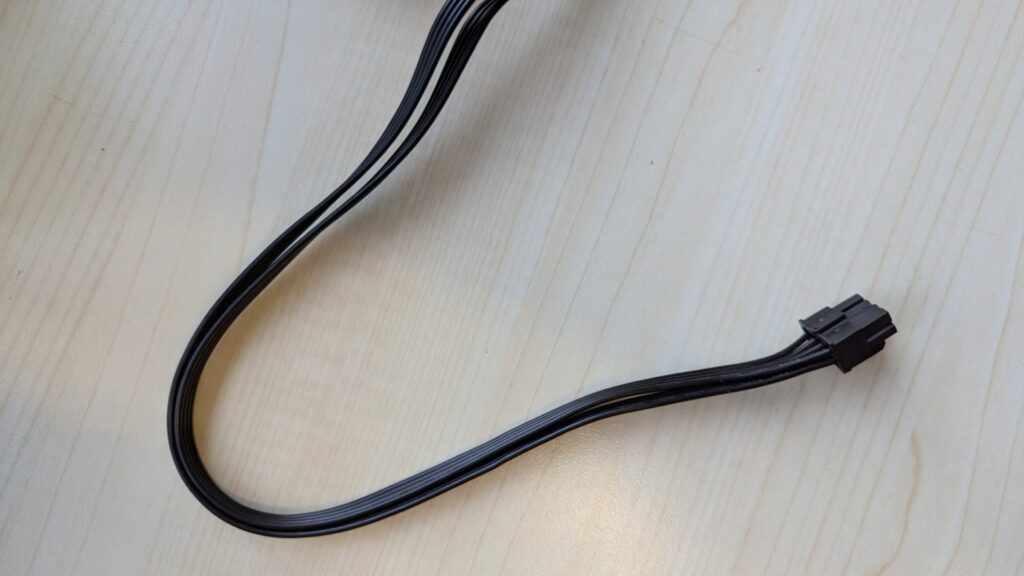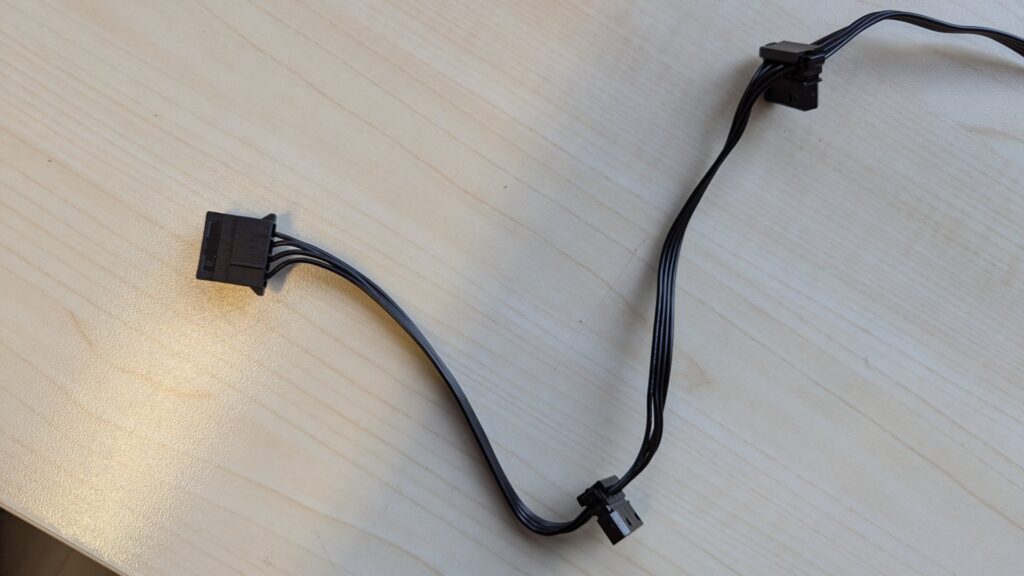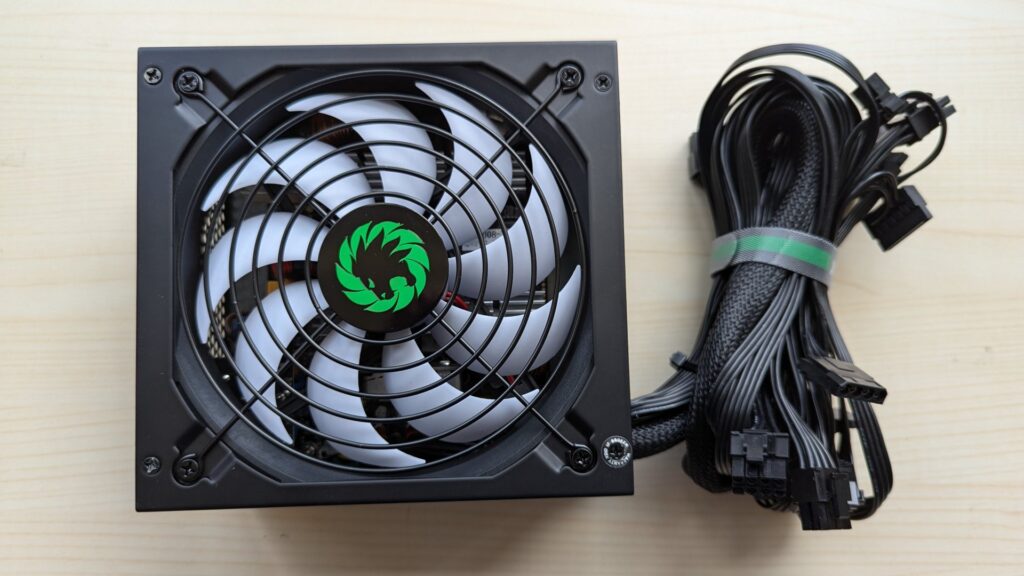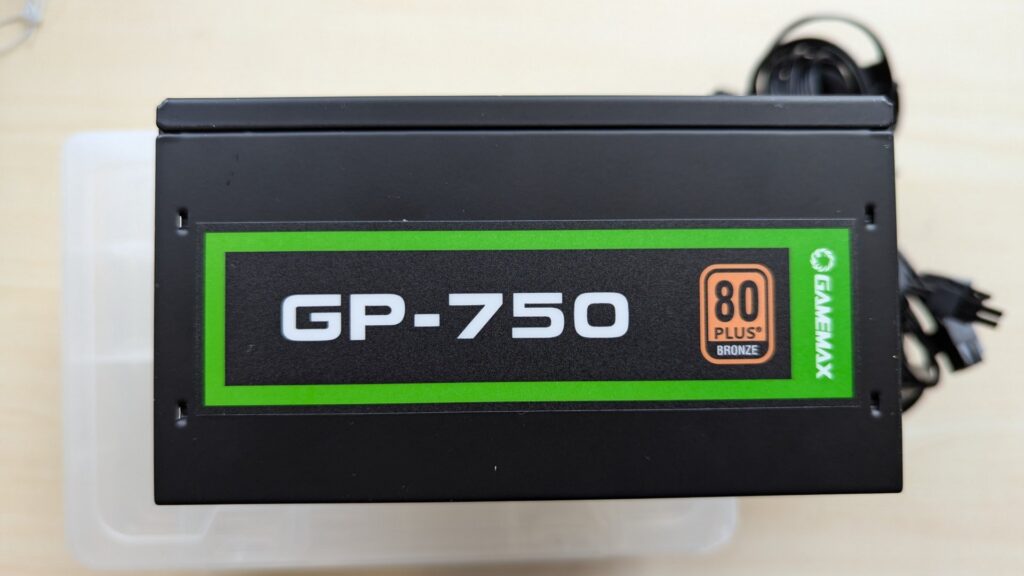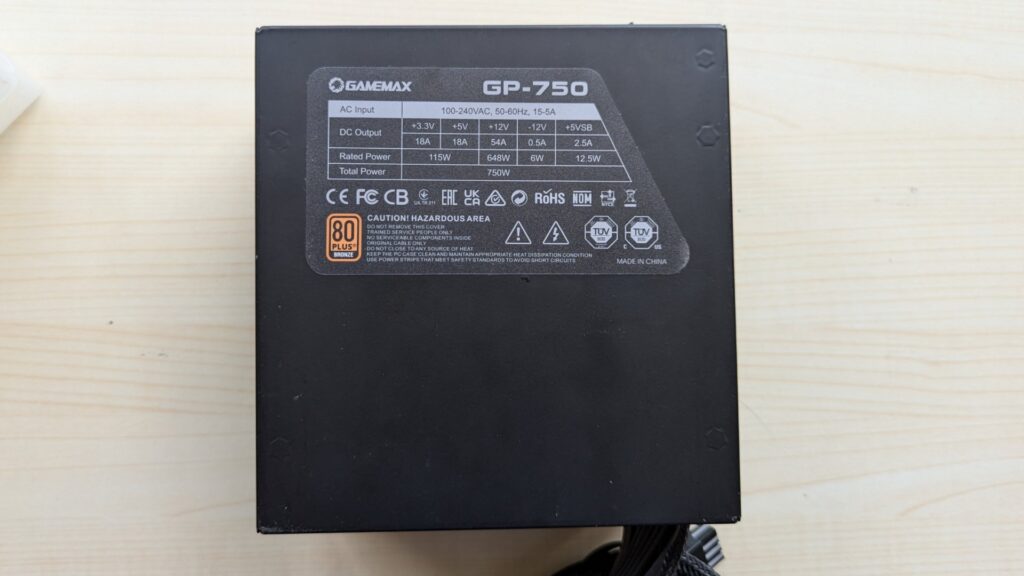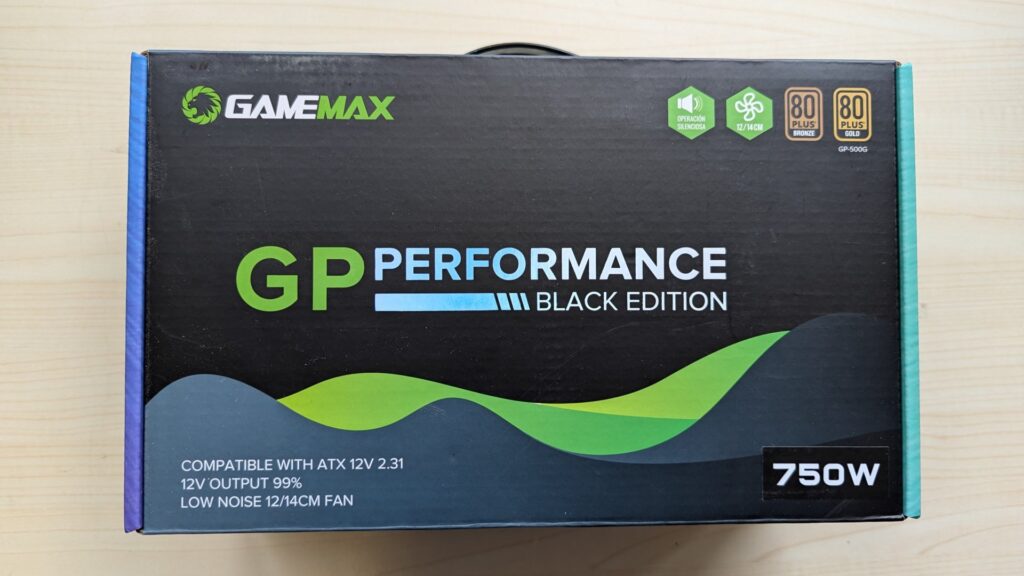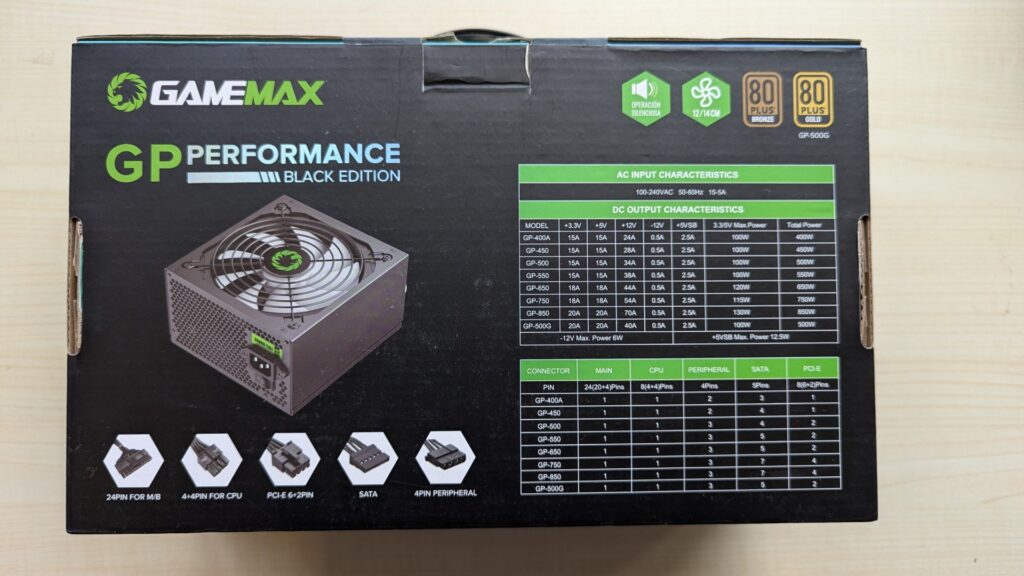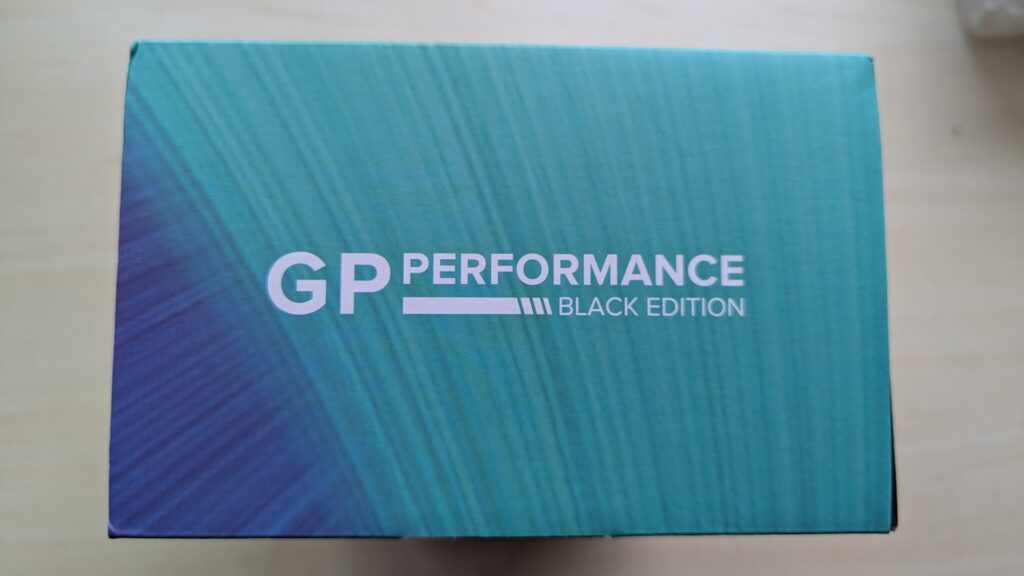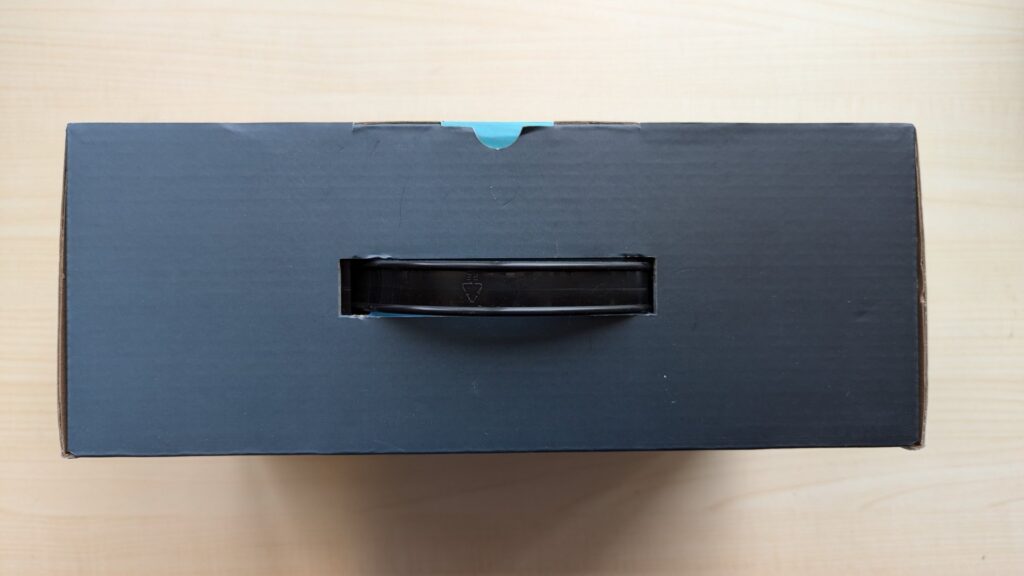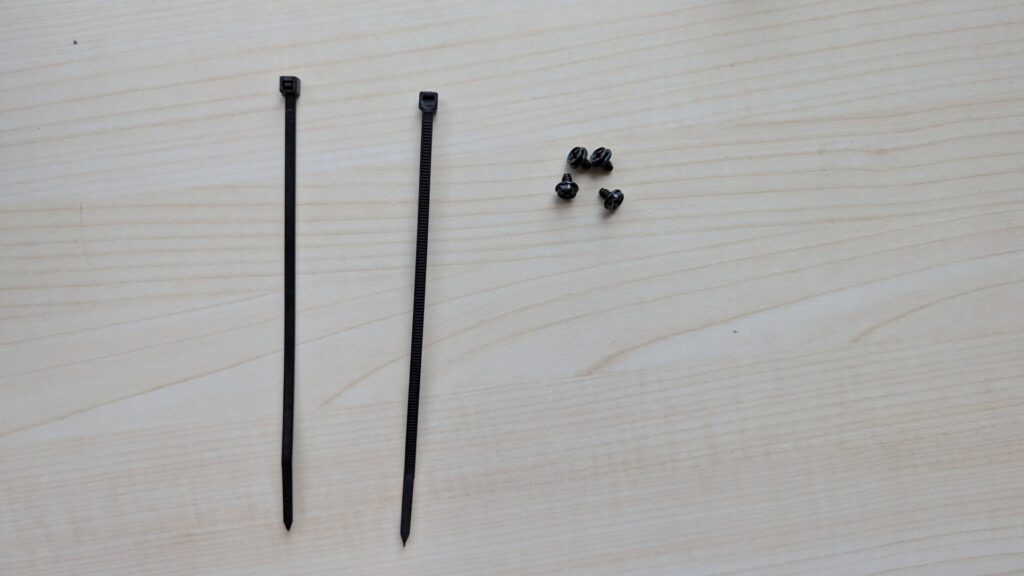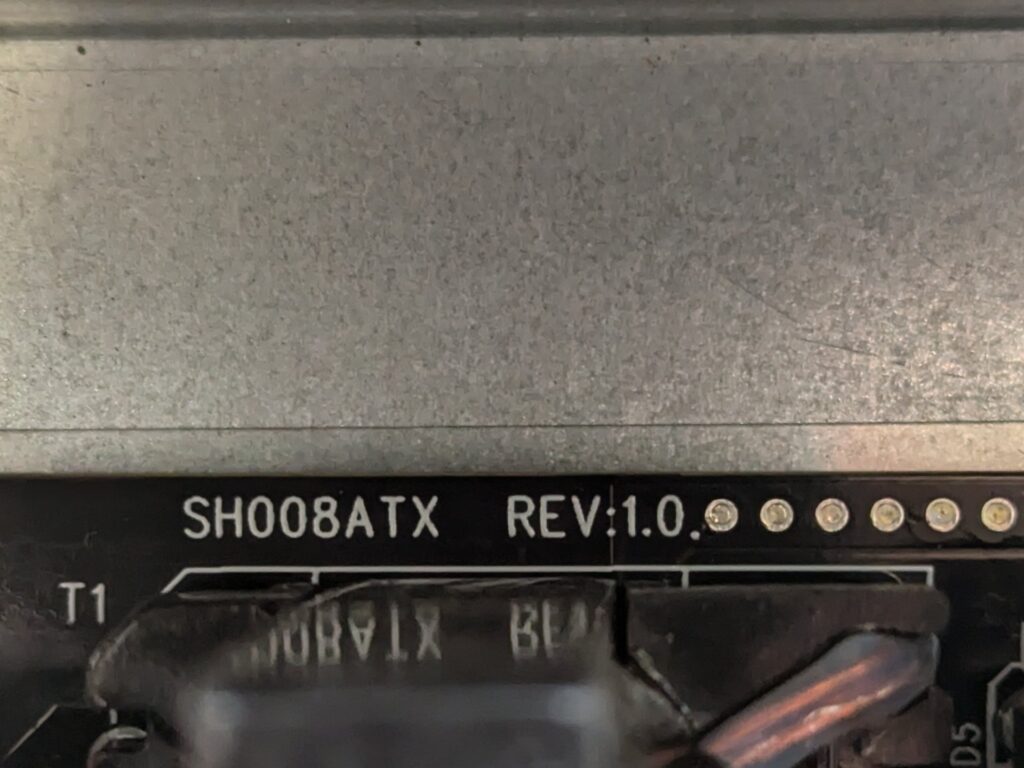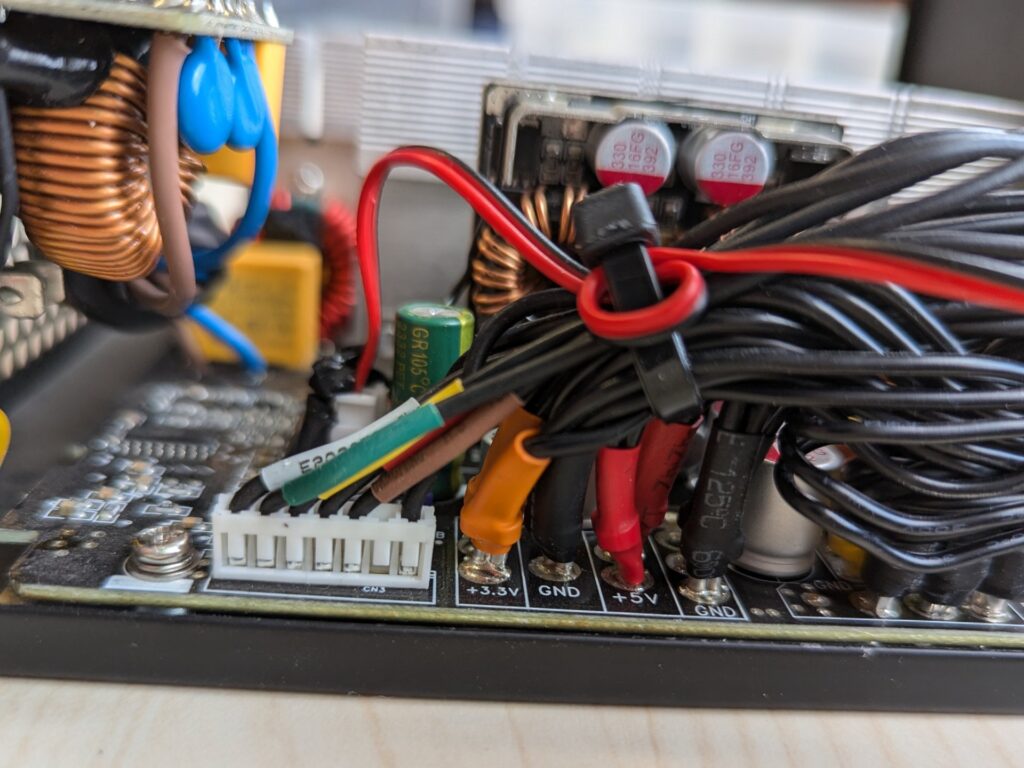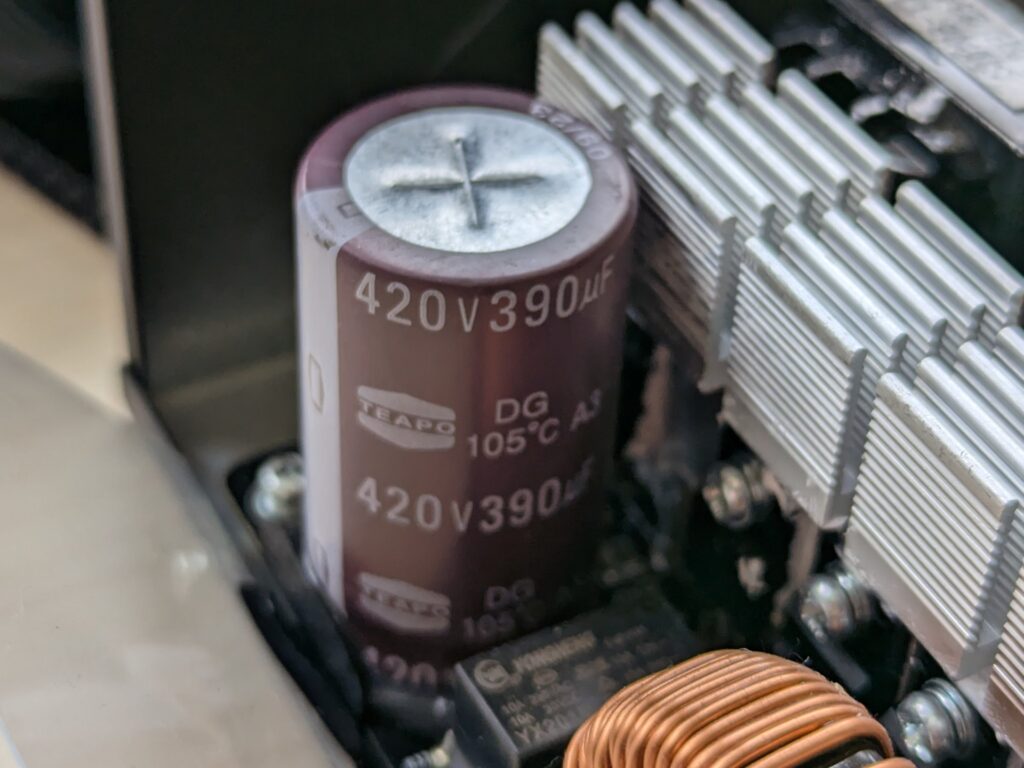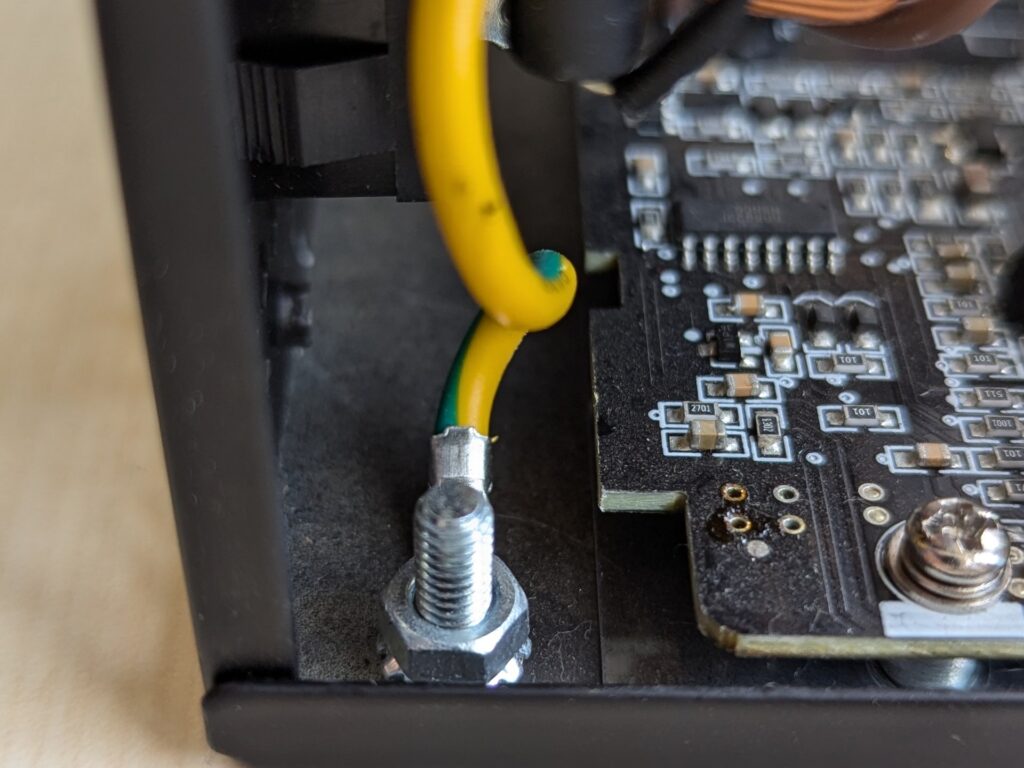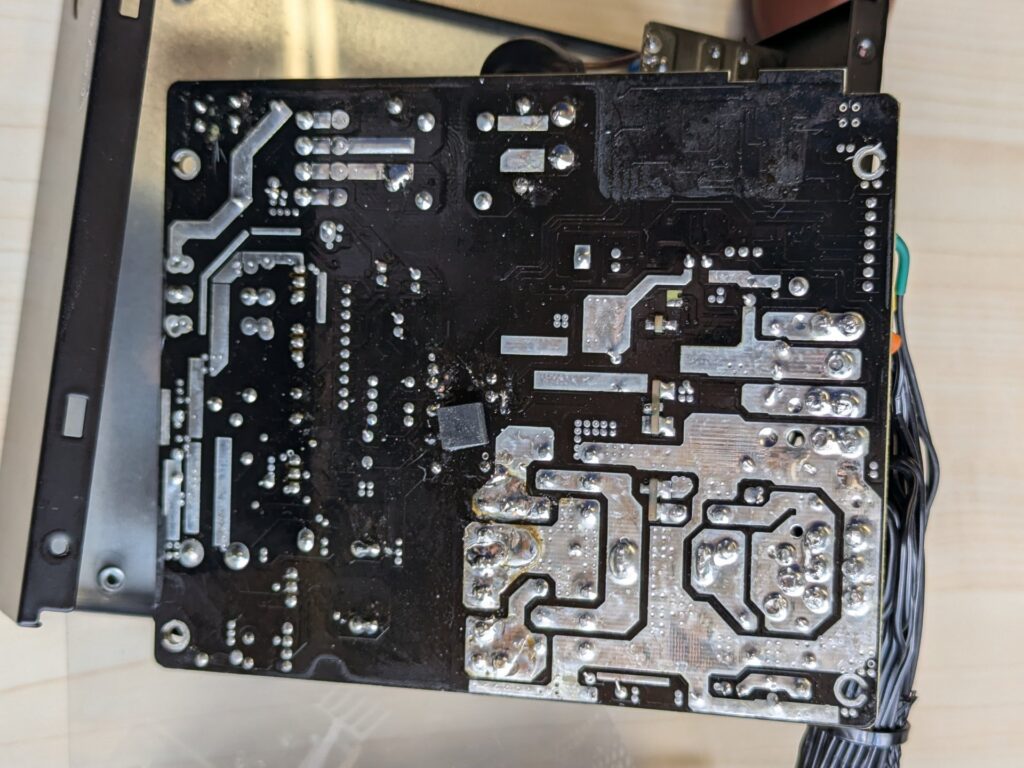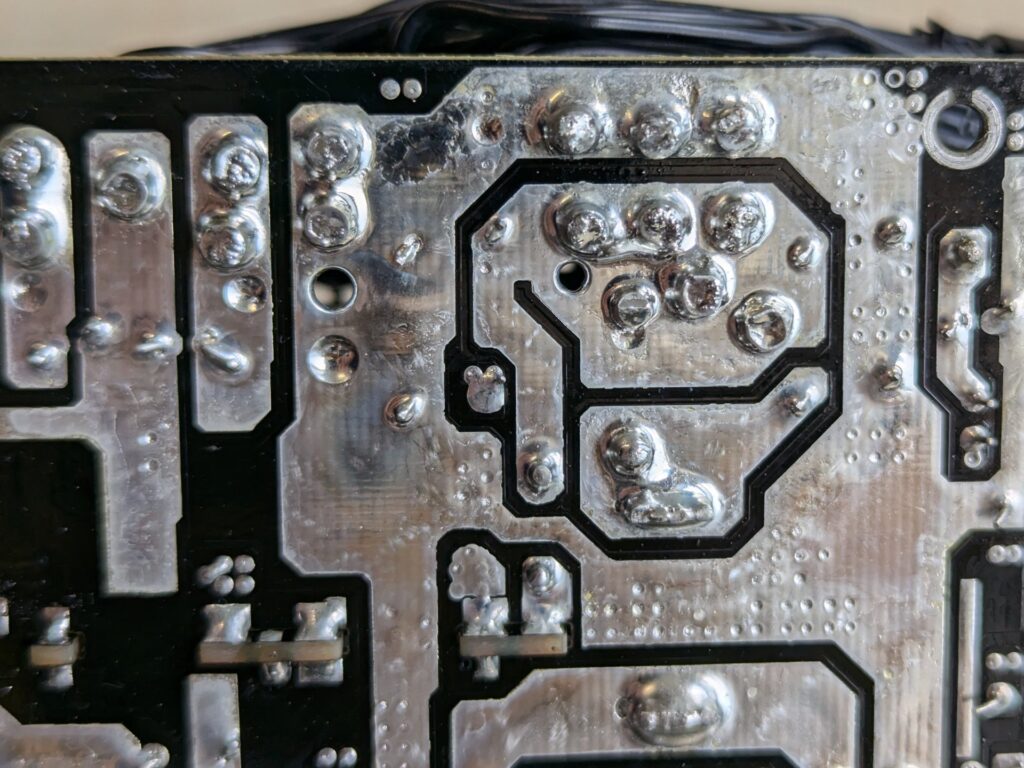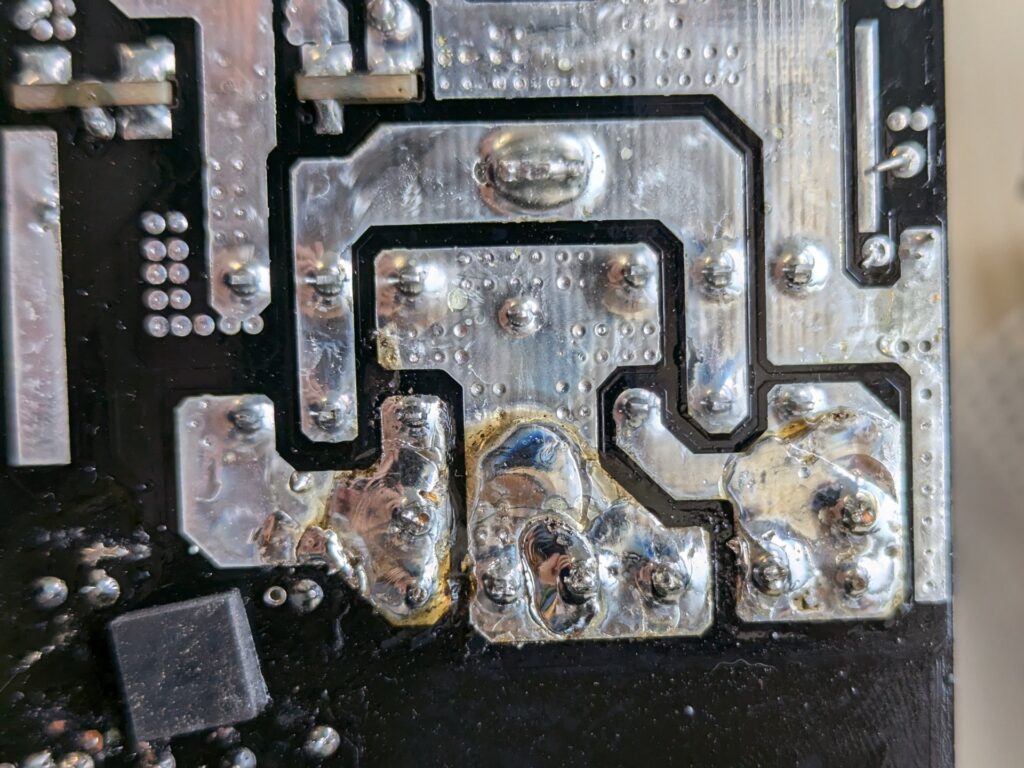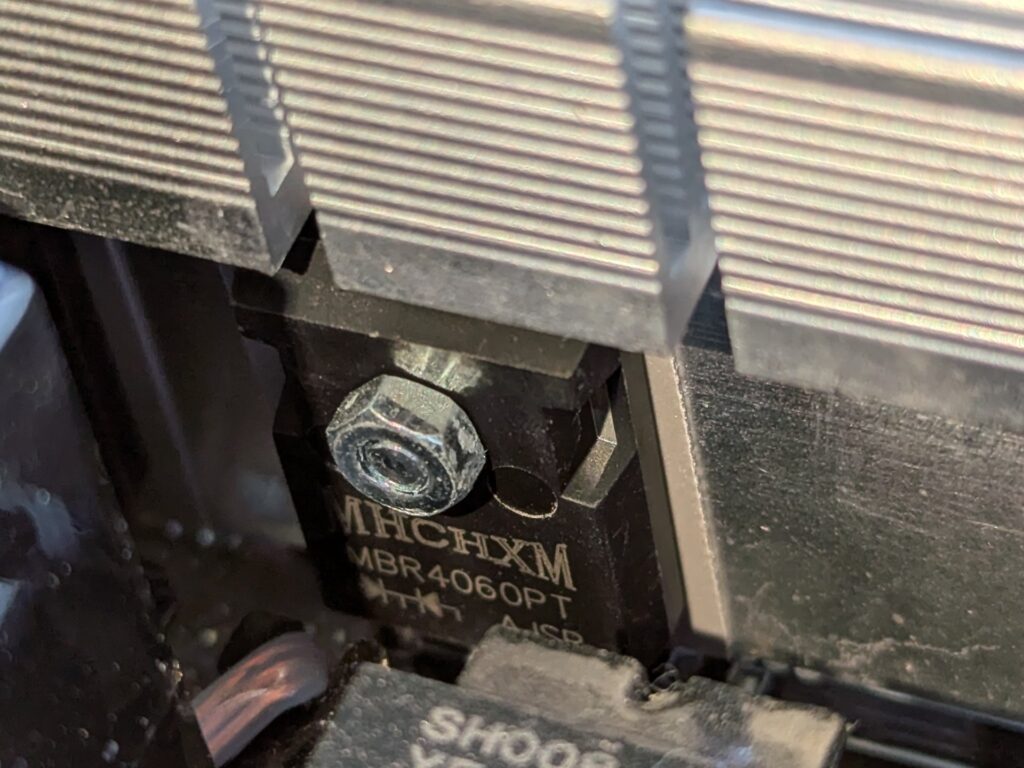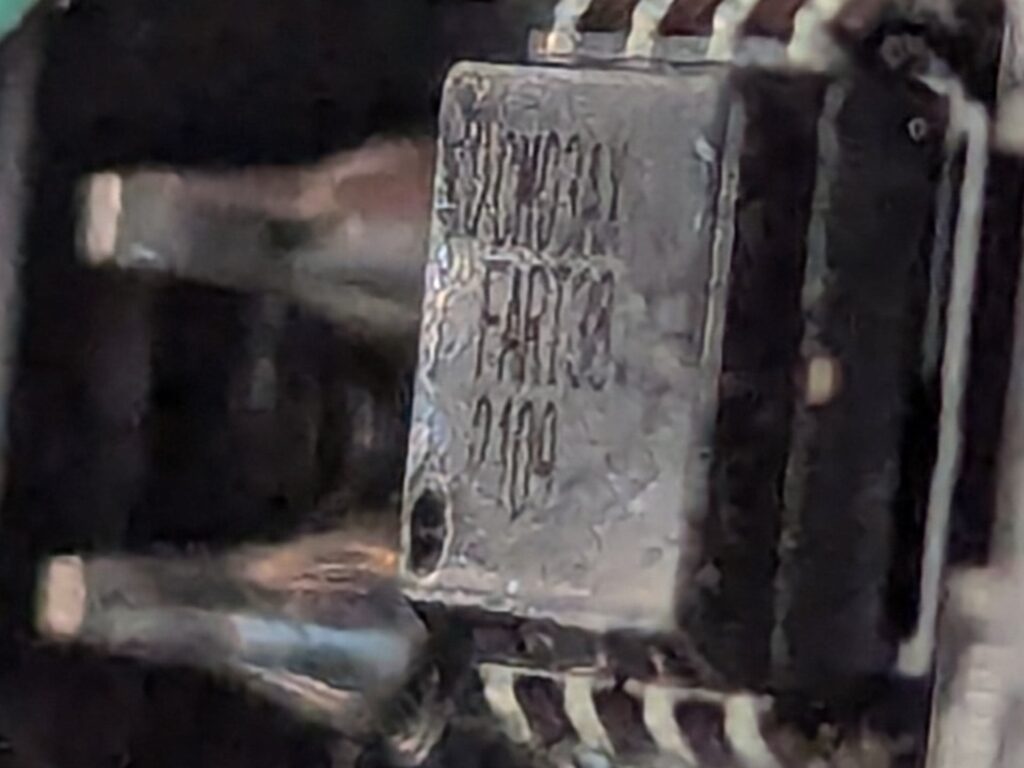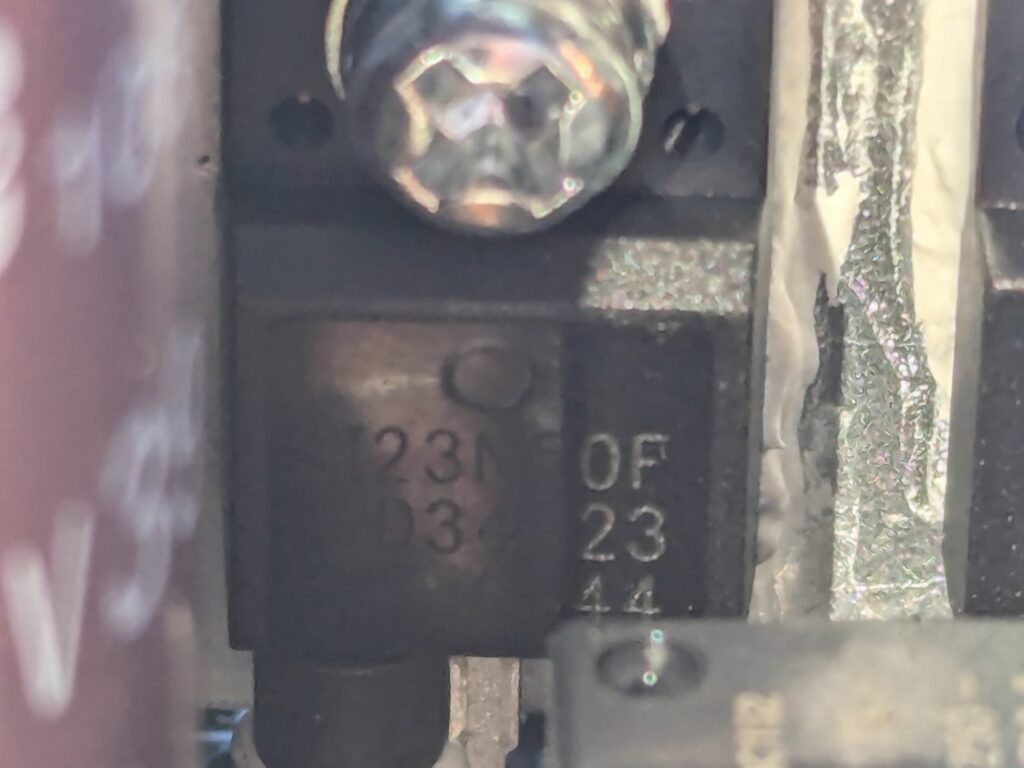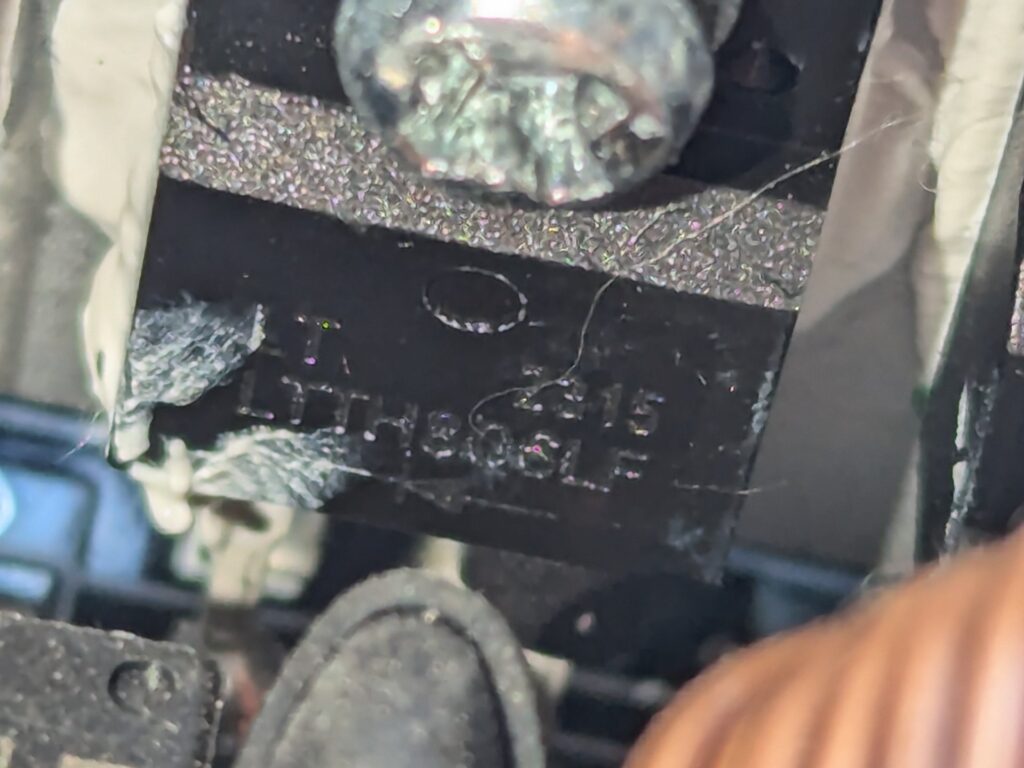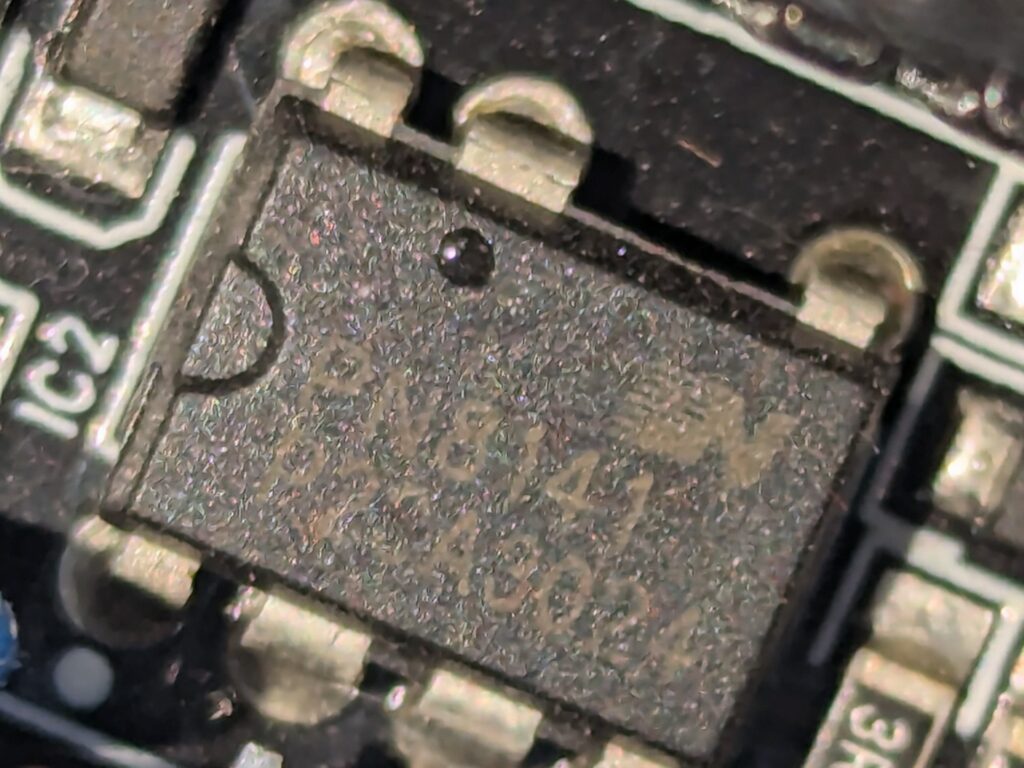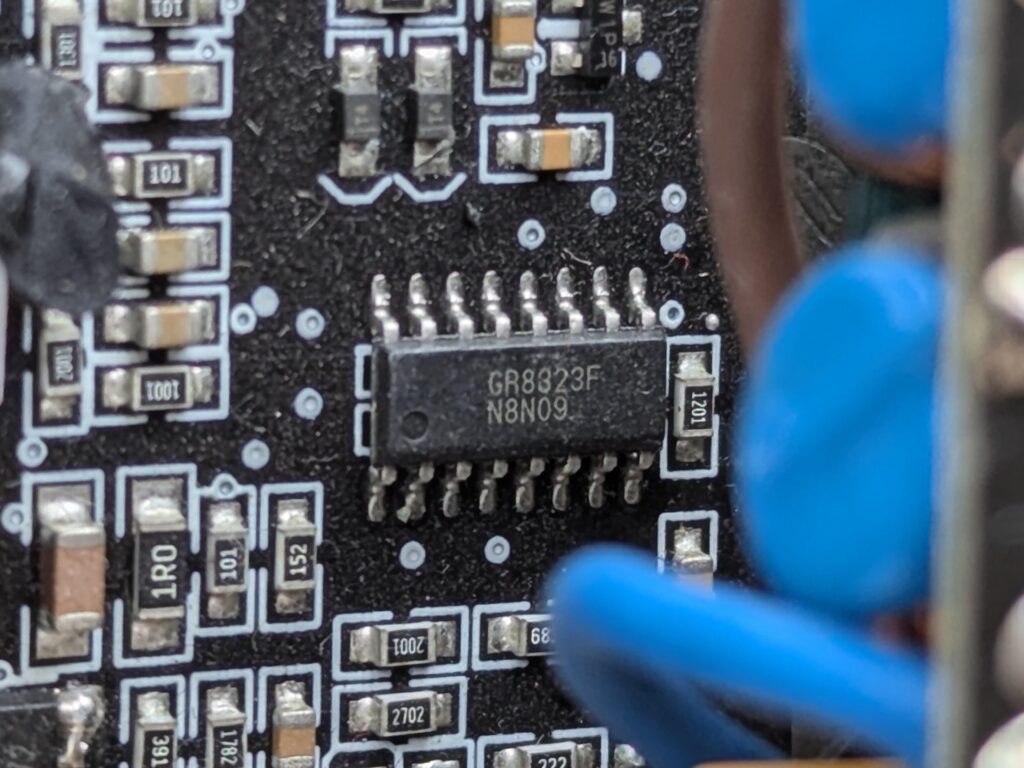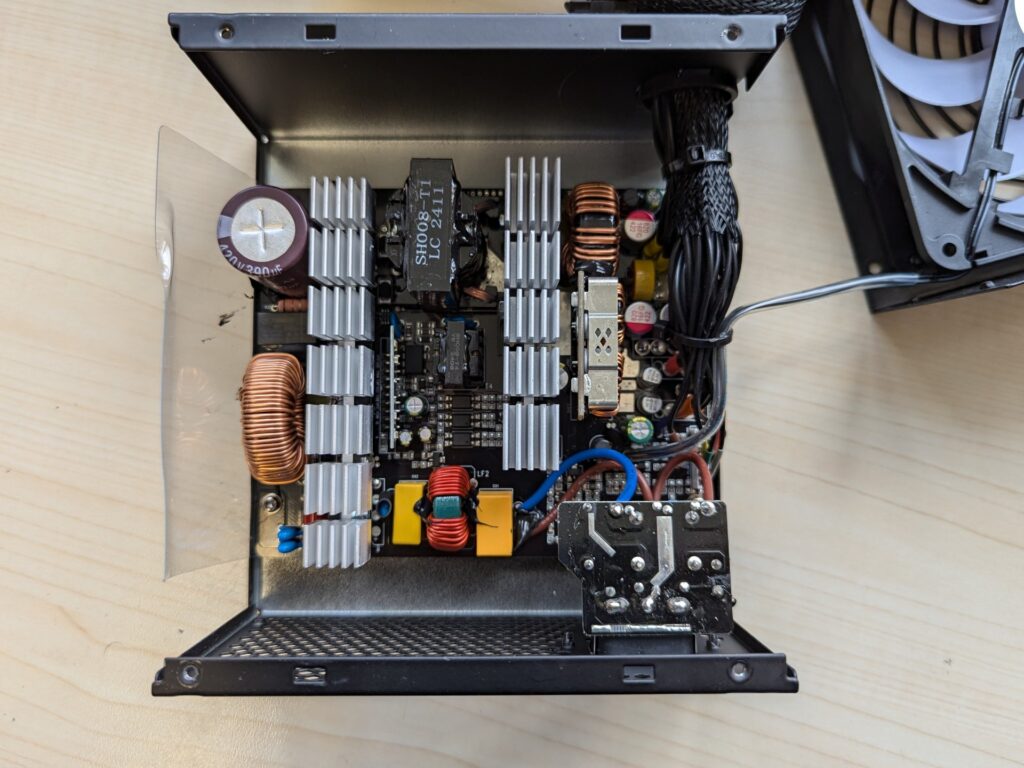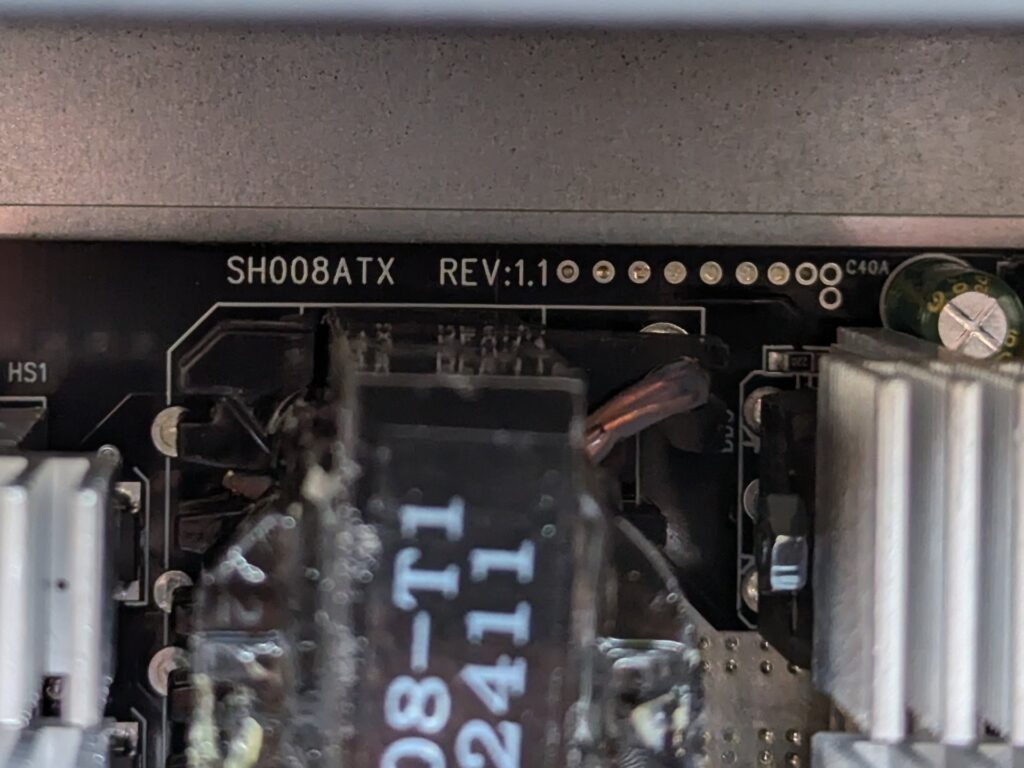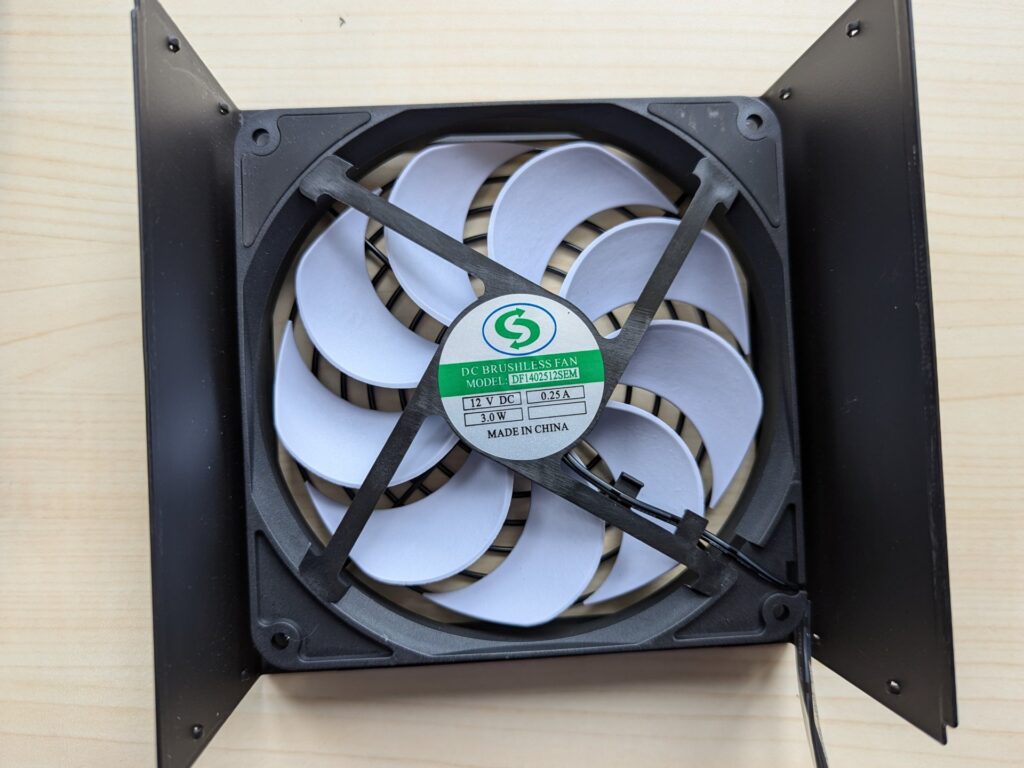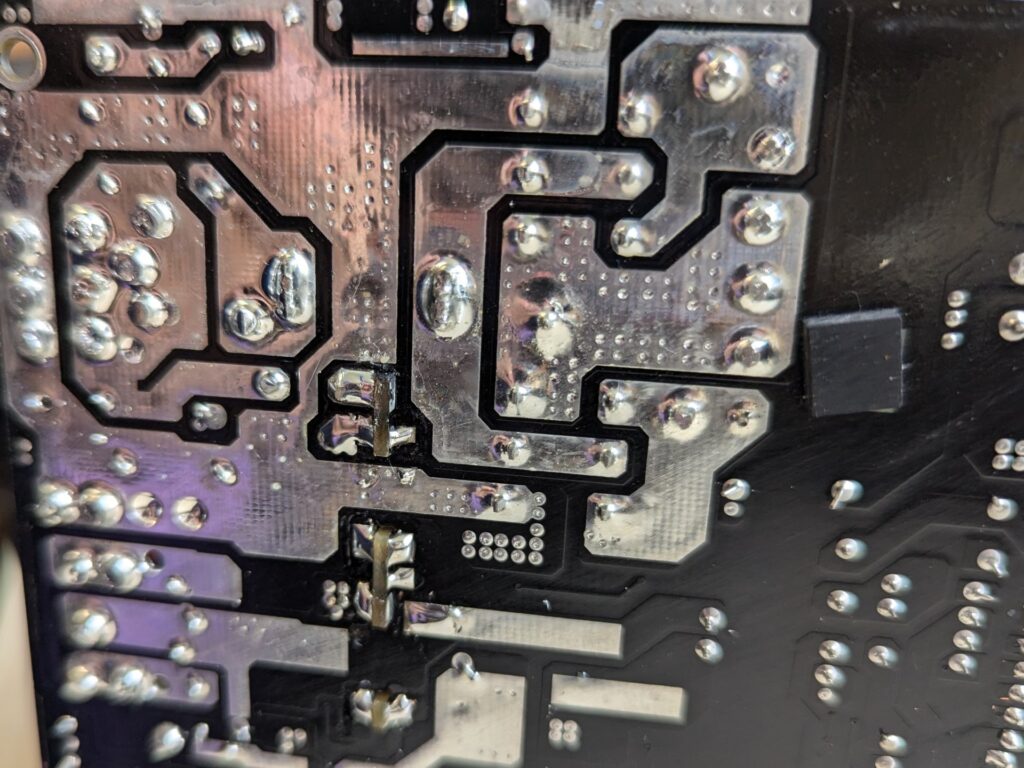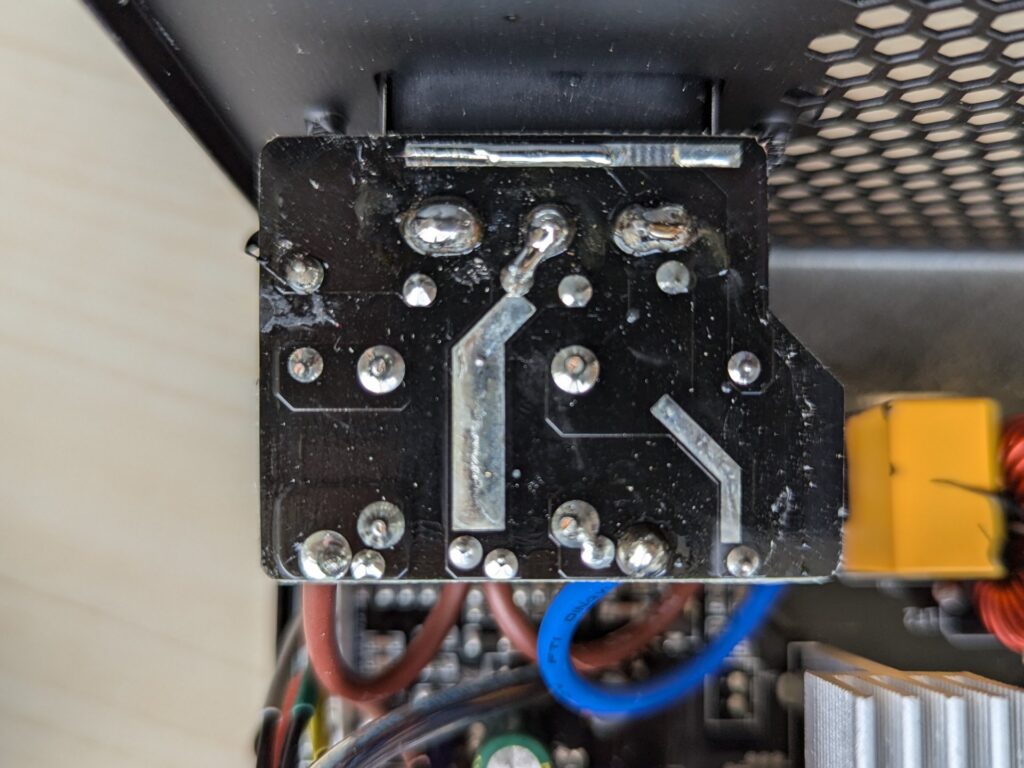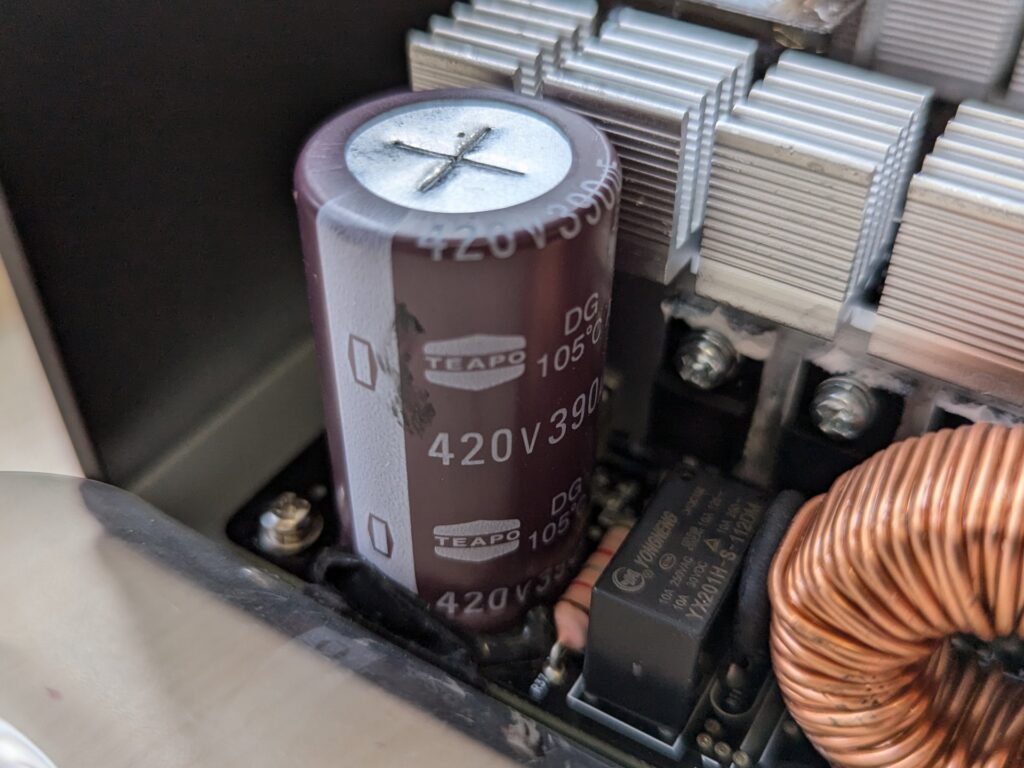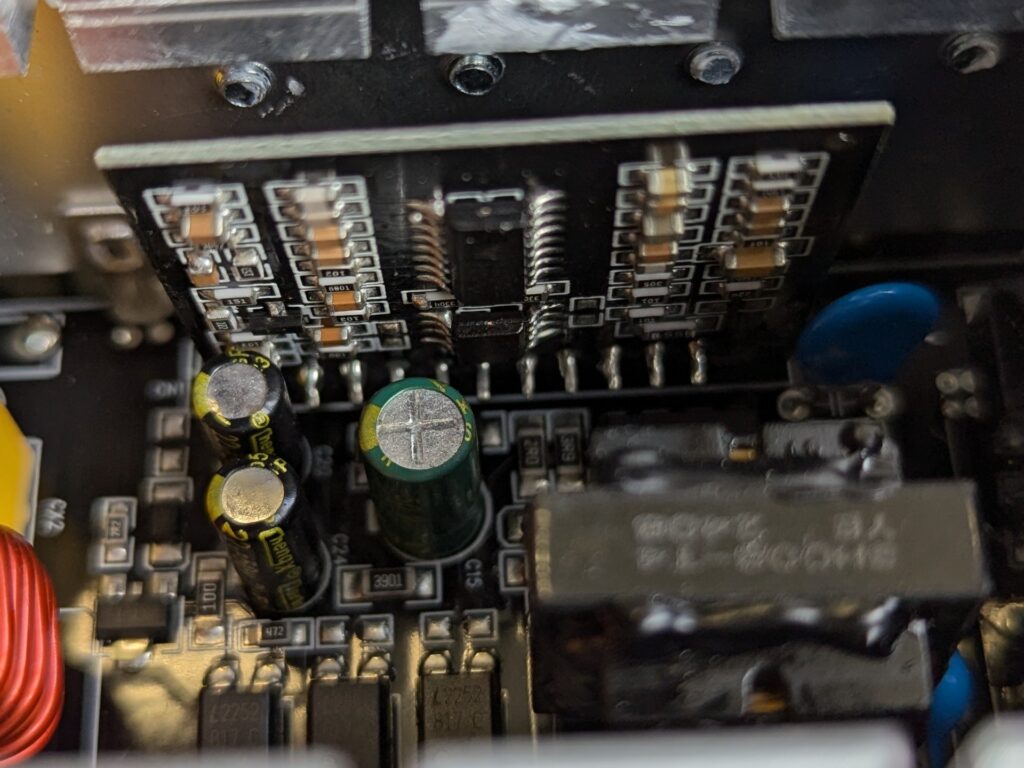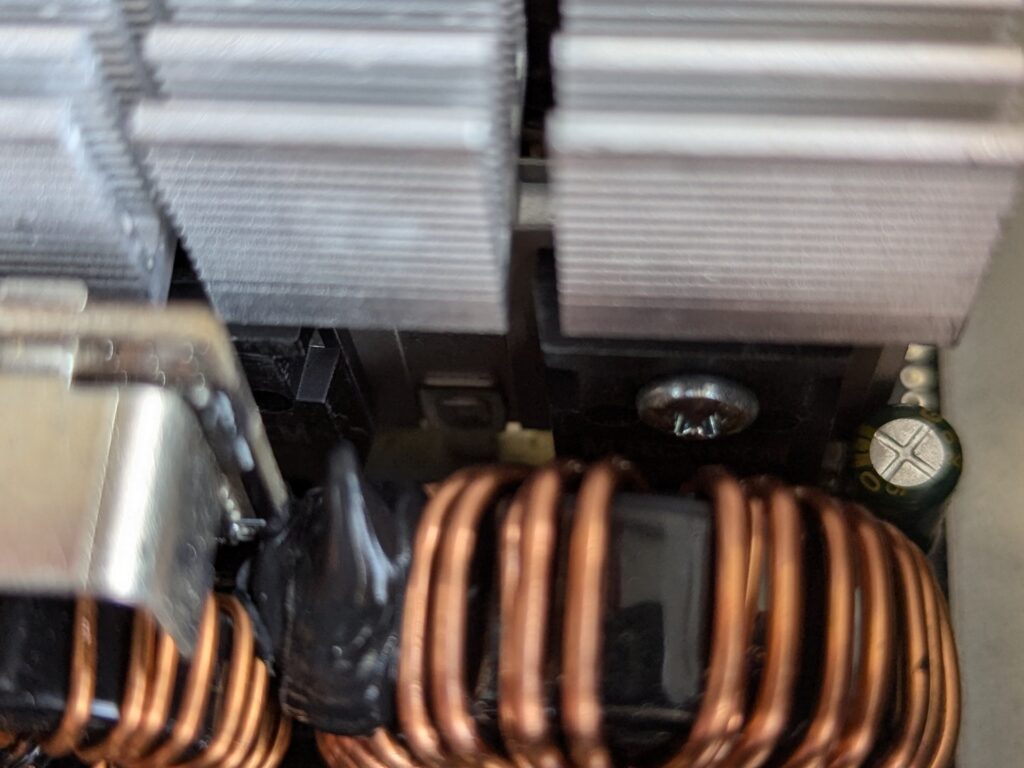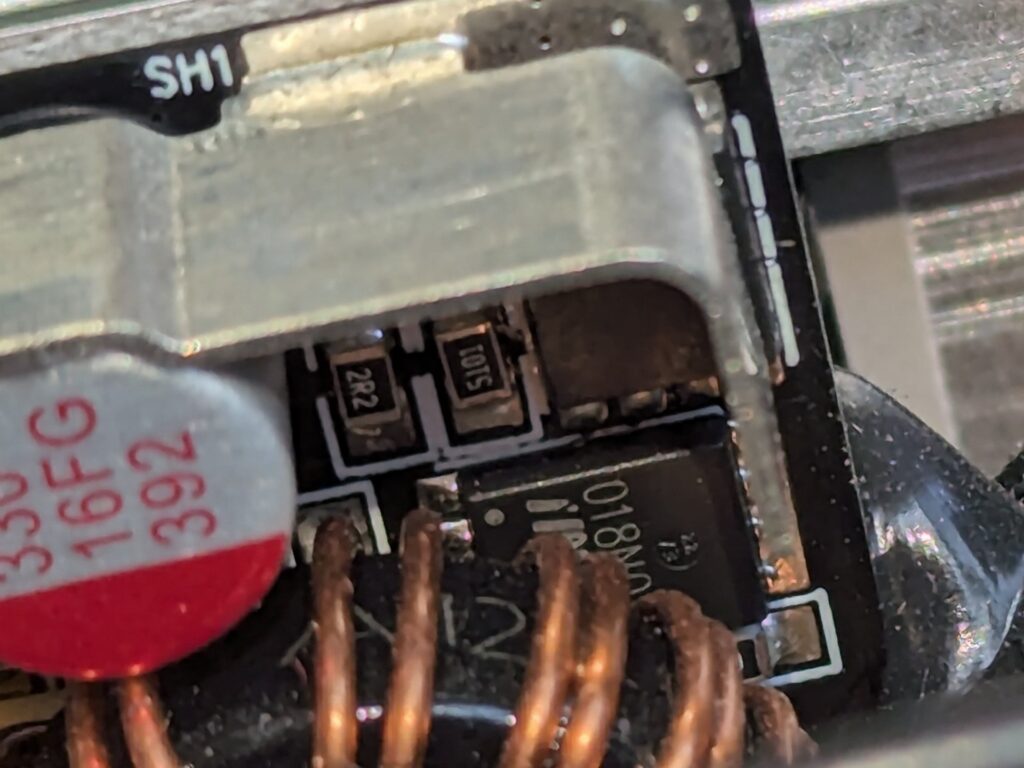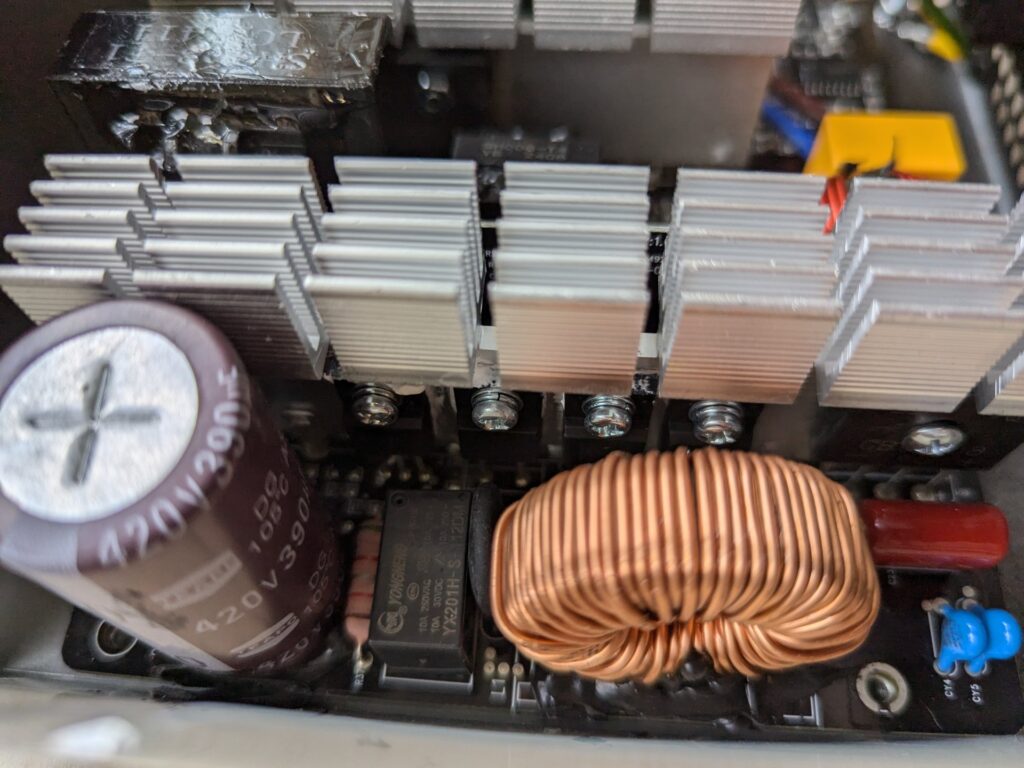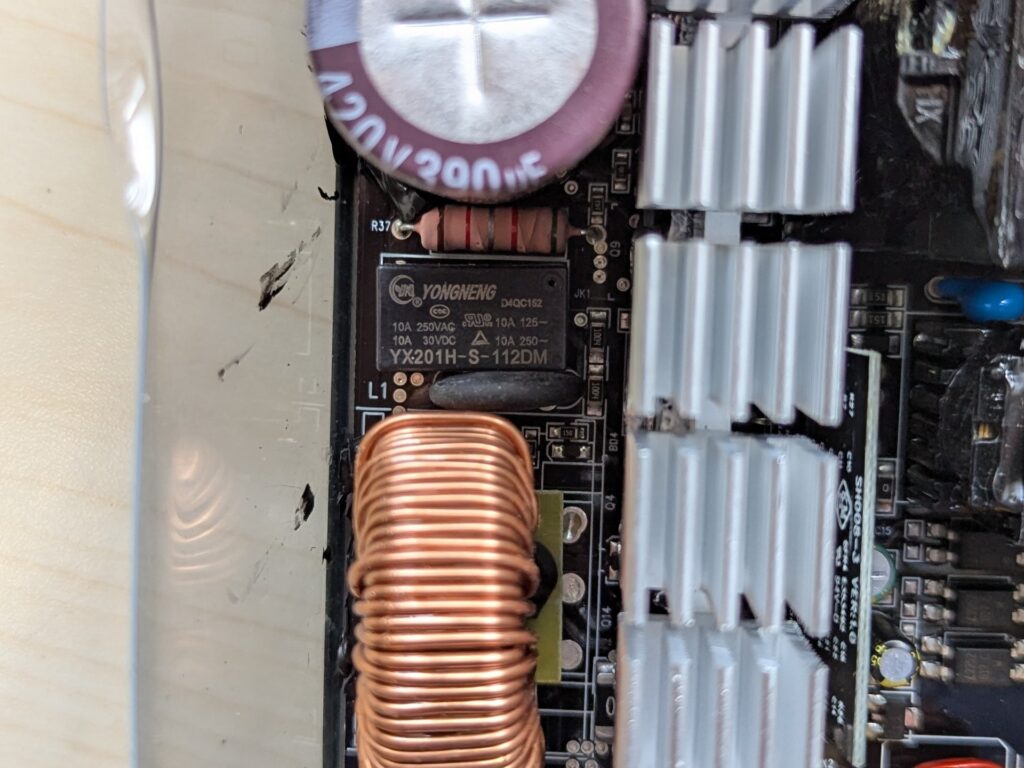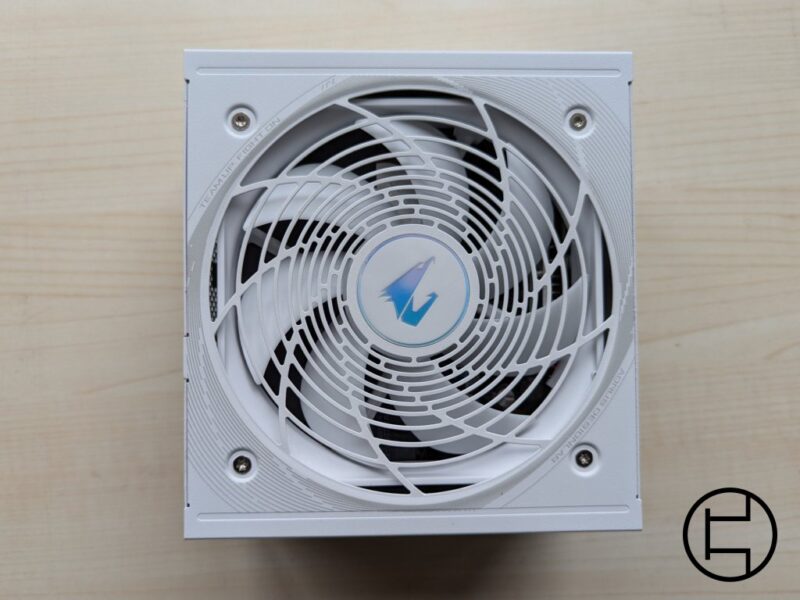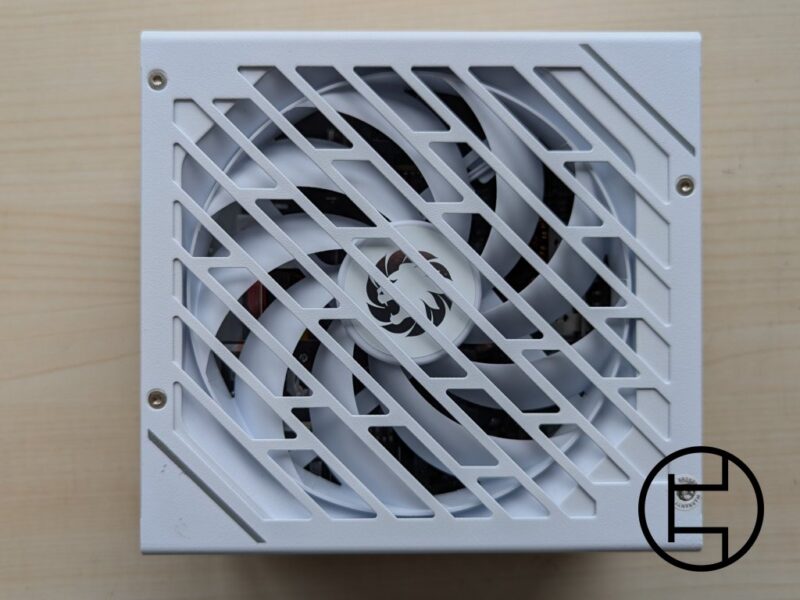Introduction
As many of you know, I’ve had a distrust for Gamemax for a few years now, which I’ve based off the following:
- Not a single Sohoo made unit has met the ATX spec in testing at Cybenetics (source: Cybenetics)
- The AX750M (RGB750) is marketed as a DC-DC PSU, which was shown by an independent reviewer, it wasn’t (source: LienusLateTips)
- No reviews proving either of these otherwise
Note: yes, RGB-1050 Pro is (mostly) well-regarded in testing at both Cybenetics and Hwbusters, but was made by Jiumeng, the company behind Aresgame and Pystar, not by Sohoo
With that out of the way, let’s start this whole review with a clean slate
Gamemax is the retail brand of Chinese company Guangdong Sohoo Technology, a Chinese OEM founded in 2010 that also manufactures cases next to its PSU production. They also sell their PSUs to Nfortec, among others
Sohoo can be compared to for example Helly with 1stplayer, as seen in our last review of the NGDP Platinum
Today, we’re looking at the GP750, an 80+ bronze rated, non-modular PSU… or rather… How about a pair of them?
Long story short, I was originally supposed to receive my samples from China, which got delayed, Gamemax sent another shipment from the UK, while that was shipped, the Chinese samples arrived at my door and well… Here we are, with a pair of PSUs for once. But hey, makes it so we can compare samples!
Let’s get started!
General Specifications
| Brand | Gamemax |
| Model | GP750 |
| Wattage | 750W* |
| Introduction year | Unknown |
| Modularity | Non-modular |
| Warranty | 2 years |
* 12V Rail indicates only 650w capacity
Power Specifications
| 3.3V | 5V | 12V | 5VSB | -12V |
| 18A | 18A | 54A | 2.5A | 0.5A |
| 100W | 648W | 12.5W | 6W |
The 12V rail should’ve been around 62A, not just 54A. This means this is realistically a 650W unit at most, not a 750W
Otherwise, it checks out
Cables
| Cable type | Cable Quantity | Connector Per Cable | Gauge |
|---|---|---|---|
| ATX 24 pin | 1 | 1 | 18AWG |
| EPS 4+4 pin | 1 | 1 | 18AWG |
| PCIe Power 6+2 pin | 2 | 2 | 18AWG |
| SATA Power | 1 | 4 | 20AWG |
| SATA Power | 1 | 3 | 20AWG |
| Peripheral 4 pin | 1 | 3 | 20AWG |
Let’s start on a positive note, Gamemax included the right amount of PCIe power, SATA and peripheral power connectors that I’d expect of a 750w, have chosen a safe wire gauge for the amount of power going through and I haven’t noticed any build quality issues with them
Now, I do have quite a few complaints as well:
The cables are marked at 18-20AWG, which should be just enough given the amount of power going through them, which won’t be my main complaint… But I’ve never felt something this cheap and flimsy at this gauge. Am I spoiled with generally using 16AWG? Probably, but I felt like it was worth noting.
The cables also feel clunky to work with due to the rows of both the EPS and PCIe cables being separated from each other. It’s something easily fixed with a decent amount of zip ties, but only makes it feel cheaper and cheaper
These days, the industry standard is to have dual EPS cables included with a 750w unit (even a number of 650w units do), making it a bit sad to see the GP750 only including a single EPS (even if I can’t imagine someone hooking up a unit like this to any kind of platform that would actually justify dual EPS)
My usual complaint of daisy chained PCIe cables will also come in here, I would’ve really preferred to have 3 separate PCIe cables, but given the unit is non-modular, it wouldn’t have made as much of a difference compared to most semi- or fully modular PSUs with cable management.
Overall, can’t say I have any dealbreaking complaints about the cables, but they definitely didn’t wow me
External
Disclaimer: I opened up the unit before taking these pictures, the warranty was voided by me.
Starting with the box, it contains pretty much just the essentials, giving you a pair of zip ties, a set of screws and of course the PSU itself with its attached cables. While more premium PSUs come with a ton of zip ties, Velcro, cable combs and more, this is about what you should expect of a budget PSU honestly. The only somewhat odd absence is an AC power cable, though this does make it easier to sell the unit worldwide, as you don’t have to keep the various power plugs in mind when boxing it all up.
Moving onto the PSU itself, let’s start with the back, where we find quite honestly a solid exhaust design. Full of hexagons (yes, that obsession ain’t gonna leave any time soon), only blocked by the power switch, a C14 plug and some room for the “full range” sticker right above it. Not bad!
The sides are simple, a generic black box design with a green and black sticker showing the model and 80+ rating of the PSU… Nothing special, nothing to complain.
On the top we find a removable fan grill with in the middle a Gamemax logo, covering a white fan we’ll get into more detail about later. Again, nothing special, but perfectly functional
On the bottom of the unit we find a label showing the total wattage of each rail (again showing this honestly should’ve been at most a 650w unit), some certifications and again the 80+ rating of the GP750.
Finally, at the front we find all the cables, by default all bundled up using a strip of Velcro.
Overall, nothing surprising, but all functional without any unnecessary flare.
Protections
| AC OCP | PN8141 |
| AC UVP | PN8141 |
| DC OCP | GR8323F |
| DC OVP | GR8323F |
| DC UVP | GR8323F |
| OTP | GR8323F |
| SCP | GR8323F, PN8141 |
| MOV | Yes |
The protection set of the GP750 mostly comes from the APFC controller and a separate Supervisor IC. It covers all the grounds I’d expect out of a unit like this. Would’ve been nice to see dual rail OCP since it’s possible with this IC, but that’s something most manufacturers forgo these days, so it’s an unfair complaint.
Parts Breakdown+Internal
China
| OEM | Sohoo |
| Platform | SH008ATX Rev 1.0 |
| Input Voltage | 100-240VAC |
| Primary Converter | APFC Double Forward |
| Rectifier | Passive Rectification |
| Regulator | DC-DC |
| Fan | Flyalpine DF1402512SEMI (12V, 0.24A) |
| Bearing | Sleeve Bearing |
| PCB Type | Single Sided |
| Bulk Capacitor(s) | 1x Teapo DG (420V, 390uF, 105C) |
| Bridge Rectifiers | Nanjing GBU1508 |
| APFC MOSFETs | 2x Sanrise SRC60R090B |
| APFC Boost Diode | 1x LT2315* |
| APFC Controller | YouWang 8300BY3S4NA |
| Secondary Controller | Texas Instruments* |
| Main Switches | 1x SI23N50F |
| 12V | 4x MHCHXM MBR4060PT |
| DC-DC Converters | 4x InPower 018N03S |
| DC-DC Controller | 1x Unknown* |
| Supervisor IC | Grenergy GR8323F |
| Standby PWM Controller | Chipown PN8141 |
United Kingdom
| OEM | Sohoo |
| Platform | SH008ATX Rev 1.1 |
| Input Voltage | 100-240VAC |
| Primary Converter | APFC Double Forward |
| Rectifier | Passive Rectification |
| Regulator | DC-DC |
| Fan | Xin Zheng Heng DF1402512SEM (12V, 0.25A) |
| Bearing | Sleeve Bearing |
| PCB Type | Single Sided |
| Bulk Capacitor(s) | 1x Teapo DG (420V, 390uF, 105C) |
| Bridge Rectifiers | Nanjing GBU1508 |
| APFC MOSFETs | 2x Sanrise SRC60R090B |
| APFC Boost Diode | 1x LT2B49* |
| APFC Controller | YouWang 8300BY3S4NA |
| Secondary controller | Texas Instruments* |
| Main Switches | 1x SI23N50F |
| 12V | 4x MHCHXM MBR4060PT |
| DC-DC Converters | 4x InPower 018N03S |
| DC-DC Controller | 1x Unknown* |
| Supervisor IC | Grenergy GR8323F |
| Standby PWM Controller | Chipown PN8141 |
* Unable to identify due to limited visibility of some components or lack of information
Both units are based off the same Sohoo platform, marked as SH008ATX on the PCB of the unit. The difference here is that the unit from China is a Rev 1.0, while the UK version is a Rev 1.1. So, it’ll make a nice compare to see what’s been changed. The platform itself isn’t used in any other units as far as I’m aware, but there’s little coverage on Sohoo based units in general.
It’s been a while since I’ve worked with a unit that doesn’t use a wireless design. Most PSUs these days have traces going from the main PCB to the modular daughterboard, allowing for a (mostly) wireless design. As the GP750 uses non-modular cables, there was no point in doing so here, wiring up the cables directly to the secondary side of the unit.
All components are on the top of the unit, as Gamemax has chosen a single sided PCB for the unit, claiming in their marketing that this is for stability improvements. In reality, this doesn’t make a difference whatsoever in a properly designed PSU, most manufacturers aim for a double sided layout to make units more compact. It’s just a cost saving measure here, but one that can be made without any impact.
Even though it’s single sided, it’s still worth talking about the bottom of the GP750, as it shows quite a large difference between the two. On the Chinese sample here’s a high number of touch ups visible due to the use of lead solder and a lot of leftover flux. This is most likely because this unit was a part of the first batches of units, where there’s generally a lot more supervision by the vendor, but is still more than worth mentioning.
The UK sample shows significantly less touch ups and little leftover flux, though that might also be explained by it being a later sample than the Chinese sample. Overall the soldering on both isn’t great, but shouldn’t cause any major issues as far as I’m concerned.
The heatsinks are definitely nice, showing a very effective design with enough cooling for the diodes and MOSFETs it’s cooling. There’s also a smaller heatsink around the DC-DC board for the MOSFETs on there.
Gamemax chose and even markets the very respectful choice of Teapo capacitors on the unit, something I’ve wanted to see more and has been a complaint in many of my reviews where only “Japanese” capacitors got shown off, with Taiwanese/Chinese/Korean capacitors often being hidden away. The only complaint I have here is that 390uF is a bit on the edge of things, where I would’ve personally liked a step up.
Moving onto the fan, I’ll complain a bit about the marketing of Gamemax for this unit first. This isn’t a hydraulic bearing, as both revisions use different sleeve bearing fans. Sleeve bearing fans will at most have a lifetime of 30.000 hours, while true HDB/FDB fans generally range from 50.000-300.000 hours, quite a significant difference.
The fans here are made by Chinese manufacturers Flyalpine and Xin Zheng Heng. Flyalpine is best known for making some of NZXT’s fans, among others and are honestly the worst of the two. Xin Zheng Heng I haven’t seen outside of Gamemax PSUs, but should be ever so slightly better. However, I would’ve preferred a step up to something like a Hong Hua or Globe Fan rifle bearing fan, even given this is a budget unit, it would’ve drastically improved the lifetime of the GP750. However, both fans used here will likely outlive the 2-year warranty Gamemax gives on it, though I wouldn’t expect it to work longer than 3 years.
Something I haven’t had to talk about before in my reviews is the choice of a passive rectifier in PSUs, but for everything a first time. Most PSUs these days make use of MOSFETs in a synchronous or “active” rectification setup, allowing for much higher efficiency compared to the older passive method. However, using passive rectification with schottky diode diodes saves cost, and that seems to have been the aim here. It should however still be able to reach the claimed 80+ bronze rating here.
Speaking of said schottky diodes, they seem to be a clone of Vishay’s (now Onsemi) MBR4060PT, made by Chinese manufacturer MHCHXM. Whether or not these are licensed or not, I can’t say.
Moving on to regulation, there’s a small daughterboard with a pair of coils and all the components for the DC-DC conversion, allowing to convert the 12V rail to 3.3v or 5v. While I couldn’t identify the DC-DC controller, it seems like a pretty basic one, which is fine given the existing protection setup of the GP750.
The DC-DC converters themselves are made by InPower, and actually took as far as looking into some polish reviews of some SAMA-made Endorify (formerly SilentiumPC) PSUs to find out. They seem to be rather uncommon, but up for the job.
The APFC setup is handled by a single bridge rectifier, a pair of MOSFETs and a boost diode, controlled by a YouWang controller. There seems to be a secondary controller on the same PCB, but I was unable to identify the exact model beyond it being Texas Instruments.
Standby is handled by a Chipown PN8141, a brand that’s not commonly found in consumer PSUs, because it’s a bit overcomplicated to use for one, but Gamemax chose to use it in both samples either way. Nothing wrong with it, just a bit more effort on their side.
Overall, the unit has been visibly cheaped out on, has some components more on the edge of its spec and the overall build quality isn’t amazing. I would like to see a step up on the majority of it and an upgrade to a better fan, giving the unit a much higher lifespan than just the two year warranty and maybe a year or two spare. However, the GP750 is for the most part what Gamemax claims it to be, as it has the APFC, passive rectification and DC-DC and components that Gamemax shows off in their marketing.
Electrical Performance
As there’s no Cybenetics report of this unit at the time of writing, there will be no electrical performance included in this review
Conclusion
Honestly, the GP750 is a perfect example of why I generally recommend to spend up with PSUs even in cheaper builds. The unit is sold at the low price of 45 pounds (about 60 USD) at the time of writing, but it shows in many ways. If I were to estimate the lifetime of a unit like this, I would give it 3-4 years at most, whereas most gold rated units will easily last you over a decade. Yes, that does mean spending about twice as much, but you get a higher efficiency, 5-10 years of warranty and overall a much higher quality PSU in return.
However, I think it’s unfair to qualify this specific unit as low as I have with Gamemax as a whole, as it shows to be mostly what Gamemax claims it to be. I’m however not willing to say fully, as this isn’t a 750w PSU to begin with, as the 12V rail is only rated at 650w. There’s also some mention of it being a HDB fan, which it isn’t and shouldn’t be expected of a unit at this price to begin with.
We’ve chosen to note the GP750 to become tier C speculative with the next revision (whenever I get onto that…), as there’s a lack of reviews to confirm all requirements, but it likely being able to meet them. This position could change in the future if and when reviews from other parties come out.
I also lack the electrical data of this unit, as I don’t have the equipment to test this, nor was this unit covered by any reviewers that do. So for all we know, this could still show some unknown issues for now, but I’ll leave that aside here
So, to get to a final conclusion, would I recommend the GP750? Honestly, it’s tough to, even at the low price it goes for. However, it does show that Gamemax is now selling what they claim.
And this wasn’t the only unit they sent me to review… Expect more in a few weeks from now!
Gamemax GP750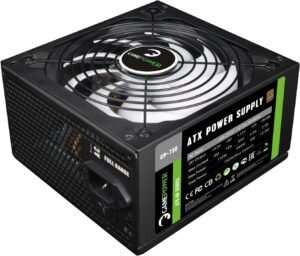
Buy GP750
- Lives up to Gamemax's claims
- DC-DC regulation
- Low price
- Sufficient cables for most mainstream builds
- Proudly showing Taiwanese components
- Comes with and is built to a 2-year warranty
- A 650W PSU marketed as 750W
- Sleeve bearing fan
- Single EPS power
- Hard to manage cables
- No electrical performance testing
Alternatives
BeQuiet Pure Power 12M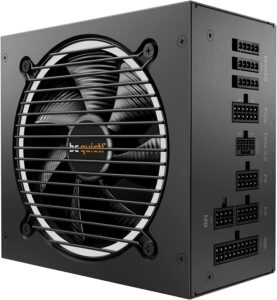
Buy Pure Power 12M
- 10-year warranty
- Certified by Cybenetics
- Rifle bearing fan
- Higher efficiency
- Included 12VHPWR cable
- 8+4 EPS cables
- Fully modular
- Dual rail OCP
- Only one PCIe power cable
Corsair RM650 2023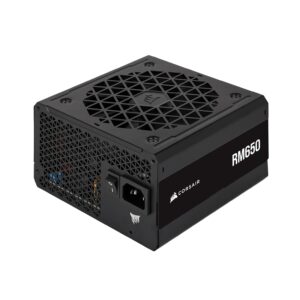
Buy RM650
- 7-year warranty
- Certified by Cybenetics
- Rifle bearing fan
- Higher efficiency
- Dual EPS cables
- Fully modular
- Only one PCIe power cable
- Compatible with, but no included 12VHPWR cable
Superflower Leadex III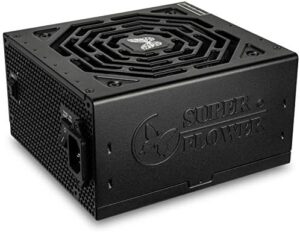
Buy Leadex III
- 10-year warranty
- Certified by Cybenetics
- FDB bearing fan
- Higher efficiency
- Dual EPS and PCIe cables
- Fully modular
- Compatible with, but no included 12VHPWR cable
Corsair RM750e 2023
Buy RM750e
- 7-year warranty
- Certified by Cybenetics
- Rifle bearing fan
- Higher efficiency
- Included 12VHPWR cable
- Dual EPS
- Dual+Single PCIe power cable
- Fully modular
- No multirail OCP
BeQuiet Pure Power 12M
Buy Pure Power 12M
- 10-year warranty
- Certified by Cybenetics
- Rifle bearing fan
- Higher efficiency
- Included 12VHPWR cable
- Dual EPS cable
- Fully modular
- Dual rail OCP
- Only one PCIe power cable
Adata XPG Core Reactor II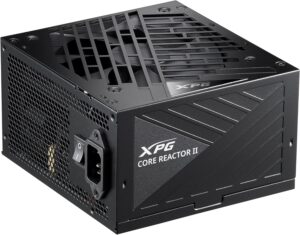
Buy Core Reactor II
- 10-year warranty
- Certified by Cybenetics
- FDB Bearing fan
- Higher efficiency
- Included 12VHPWR cable
- Dual EPS and PCIe cables
- Fully modular
- There's a similar "VE" version of the Core Reactor II, which isn't quite the same (Source: Hwbusters)
Thermaltake Smart BM3 ATX 3.0
Buy Smart BM3
- 5-year warranty
- (claimed) FDB fan
- Included 12VHPWR cable
- Dual PCIe cables
- Semi-modular
- Limited review coverage
- Single EPS cable
- GuangQi GQR1225H12H isn't confirmed to be FDB by a third party
MSI A650BN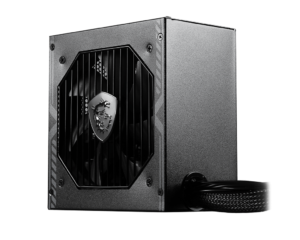
Buy A650BN
- 5-year warranty
- Limited, but sufficient review coverage
- Sleeve bearing fan
- Single EPS and PCIe cable


